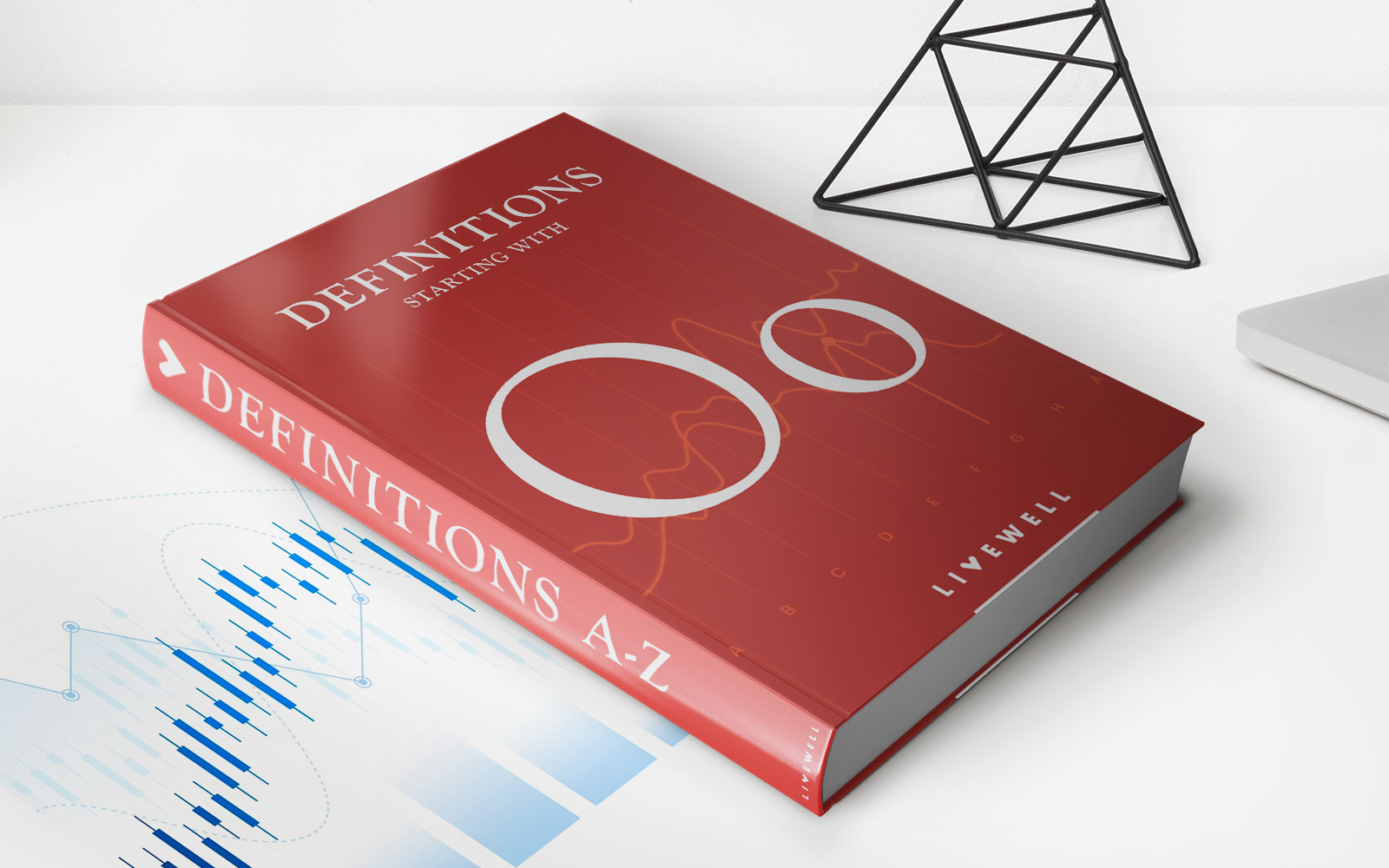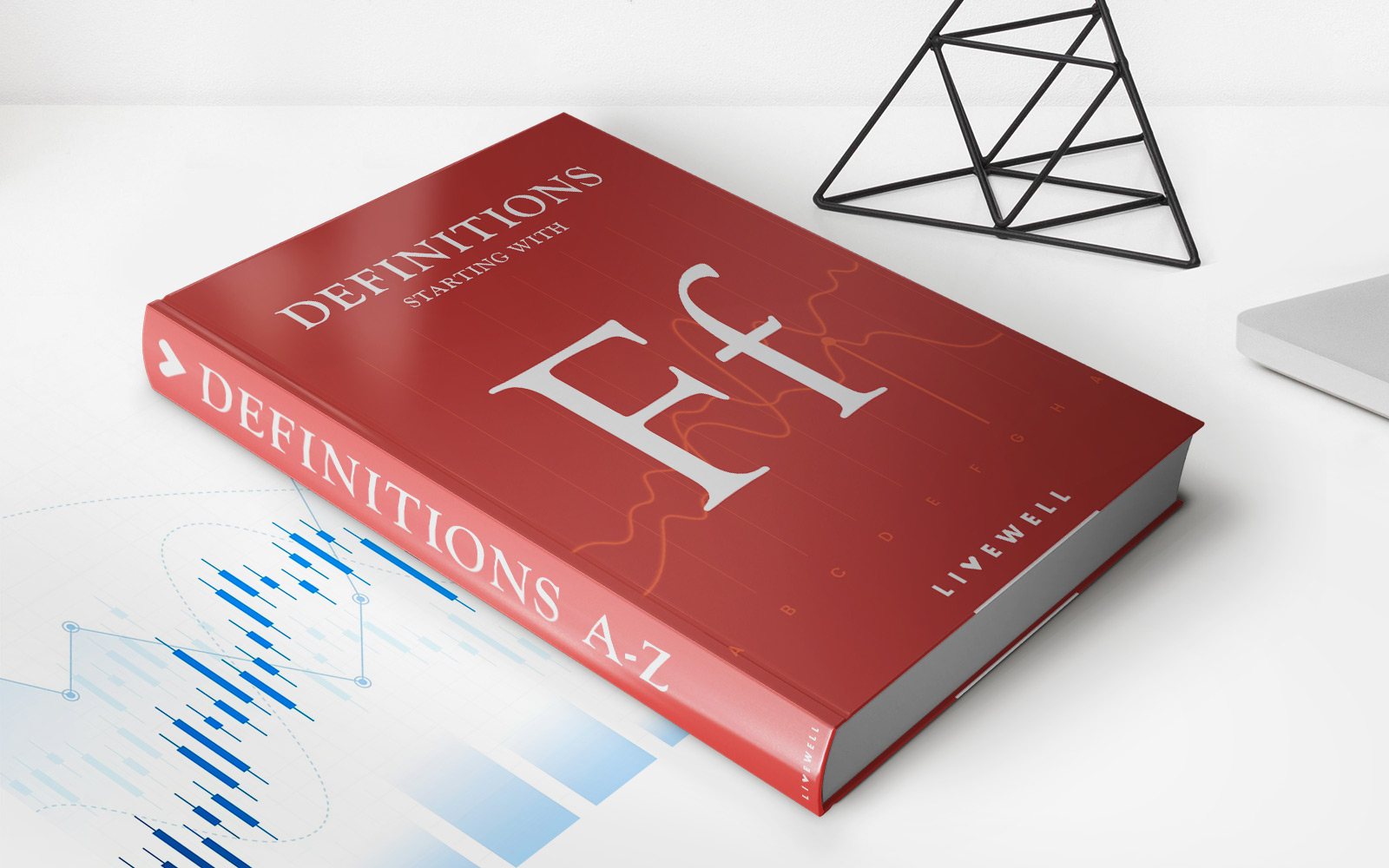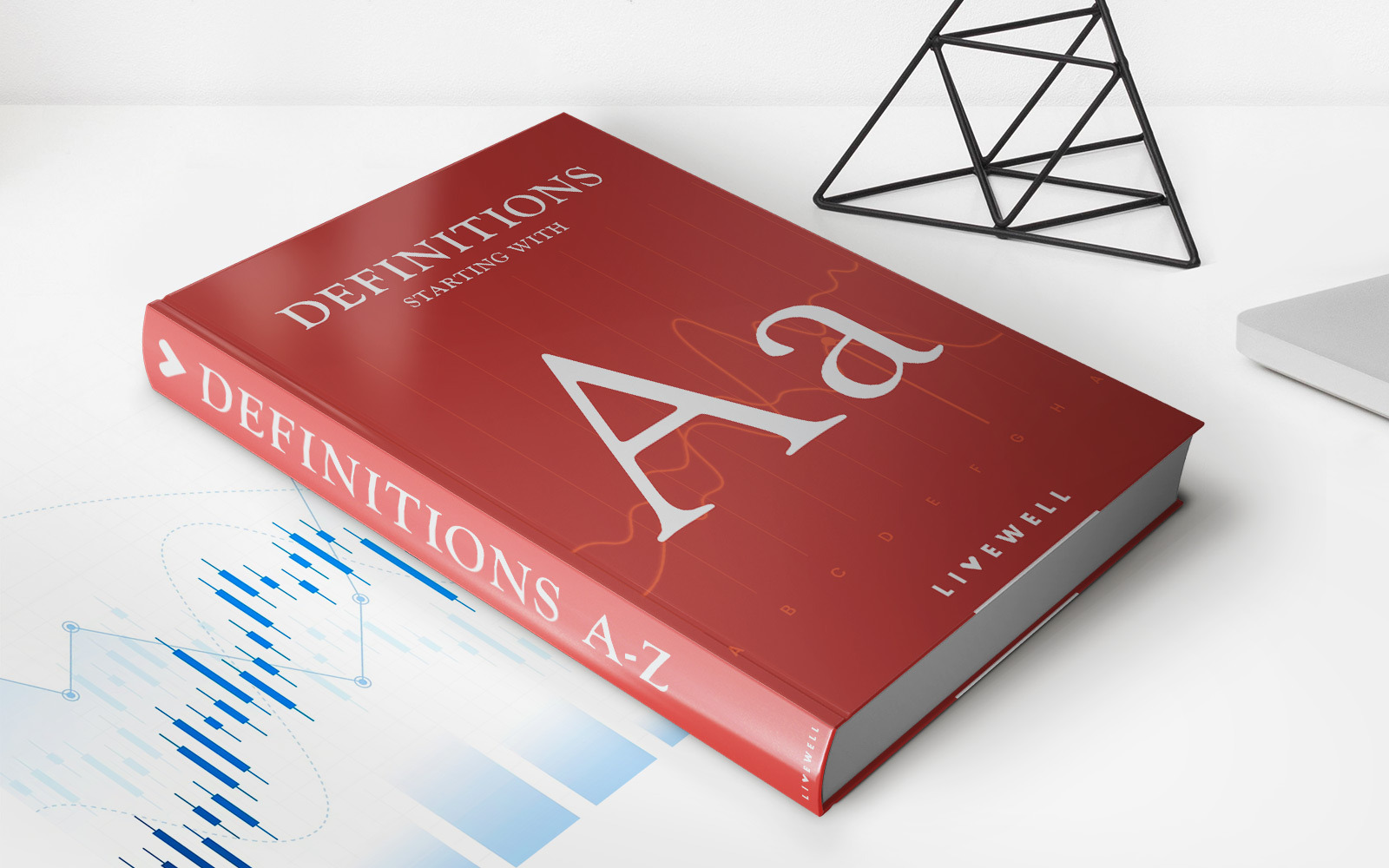

Finance
What Is An Estate In Life Insurance?
Published: November 20, 2023
Learn what an estate in life insurance means and how it can affect your finances. Discover the importance of estate planning in life insurance policies.
(Many of the links in this article redirect to a specific reviewed product. Your purchase of these products through affiliate links helps to generate commission for LiveWell, at no extra cost. Learn more)
Table of Contents
- Introduction
- Definition of Estate in Life Insurance
- Importance of Establishing an Estate in Life Insurance
- Factors Influencing the Size of an Estate in Life Insurance
- Types of Assets That Can Constitute an Estate in Life Insurance
- Strategies for Maximizing the Value of an Estate in Life Insurance
- Considerations When Designating Beneficiaries for an Estate in Life Insurance
- Tax Implications of an Estate in Life Insurance
- Common Mistakes to Avoid When Setting Up an Estate in Life Insurance
- Conclusion
Introduction
Life insurance provides financial protection and peace of mind for individuals and their loved ones. It ensures that in the event of the policyholder’s death, a designated beneficiary will receive a sum of money known as the death benefit. This lump sum can be used to cover funeral expenses, settle outstanding debts, replace lost income, and even fund future expenses such as education or retirement.
Within the realm of life insurance, there is an important concept known as an “estate.” In simple terms, an estate refers to the total net worth and assets a person leaves behind after their passing. It encompasses everything an individual owns, including real estate properties, investments, savings accounts, personal belongings, and life insurance policies. Establishing an estate in life insurance is vital to ensure that the policyholder’s wishes are carried out effectively and their loved ones are adequately provided for.
Understanding the concept of an estate in life insurance is crucial for policyholders and their beneficiaries alike. This article will explore the definition of an estate in life insurance, why it is important to establish one, the factors that influence its size, the types of assets that can be part of an estate, strategies for maximizing its value, considerations when designating beneficiaries, tax implications, and common mistakes to avoid. By gaining insights into these aspects, individuals can make informed decisions and create a solid foundation for their estate in life insurance.
Definition of Estate in Life Insurance
In life insurance, an estate refers to the total net worth and assets that an individual leaves behind after their death. It encompasses everything an individual owns and has a financial value, such as real estate properties, investments, savings accounts, personal belongings, and life insurance policies.
When a person purchases a life insurance policy, they become the policyholder, and they have the option to designate one or more beneficiaries to receive the death benefit in the event of their passing. The death benefit is the payout provided by the life insurance company to the beneficiaries, and it is usually a predetermined sum of money.
The estate in life insurance comprises not only the death benefit but also all other assets that the policyholder has, such as cash, stocks, bonds, retirement accounts, and any other valuable possessions. It is the responsibility of the policyholder to ensure that their estate is properly managed and distributed according to their wishes.
It’s important to note that the estate in life insurance is separate from the concept of a legal estate, which typically involves the distribution of assets through a will or trust. The estate in life insurance pertains specifically to the assets related to the life insurance policy and the designated beneficiaries.
Having a clear understanding of the definition of an estate in life insurance is crucial because it sets the stage for proper estate planning. This includes determining the size of the estate, managing assets, and outlining instructions to ensure a smooth transition of wealth to the intended beneficiaries.
Importance of Establishing an Estate in Life Insurance
Establishing an estate in life insurance is of paramount importance for several reasons. It provides individuals with control over the distribution of their assets and ensures that their loved ones are adequately provided for after their passing. Here are some key reasons why establishing an estate in life insurance is crucial:
1. Financial Security for Beneficiaries: By designating beneficiaries and establishing an estate in life insurance, individuals can provide a financial safety net for their loved ones. The death benefit can help cover immediate expenses such as funeral costs and outstanding debts. It can also provide long-term financial stability by replacing lost income and funding future expenses like education or retirement.
2. Avoidance of Probate: When there is a properly established estate in life insurance, the death benefit bypasses the probate process. Probate is the legal procedure through which a deceased person’s assets are distributed. It can be time-consuming, expensive, and subject to public record. By having an estate in life insurance, the death benefit is directly paid to the designated beneficiaries, ensuring a quicker and smoother transfer of assets.
3. Preservation of Wealth: An estate in life insurance allows for the preservation and transfer of wealth to future generations. By maximizing the value of the estate through effective estate planning strategies, individuals can ensure that their assets are protected and utilized wisely. This can include minimizing taxation, generating income, and establishing trusts to manage and distribute assets in a controlled manner.
4. Peace of Mind: Knowing that an estate in life insurance is properly established can provide individuals with peace of mind. It allows them to have a sense of control over their financial affairs and provides reassurance that their loved ones will be taken care of in their absence.
5. Flexibility and Customization: Establishing an estate in life insurance offers individuals the flexibility to customize their distribution of assets. They can designate specific beneficiaries, allocate different percentages of the death benefit to each beneficiary, and outline any specific instructions or conditions they want to set for the distribution of funds.
Overall, establishing an estate in life insurance is crucial for ensuring financial security, avoiding probate, preserving wealth, finding peace of mind, and customizing asset distribution. It empowers individuals to have control over their legacy and make provisions for their loved ones’ long-term well-being.
Factors Influencing the Size of an Estate in Life Insurance
The size of an estate in life insurance can vary significantly depending on various factors. These factors play a crucial role in determining the amount of assets that are included in the estate and the size of the death benefit. Understanding these factors can help individuals make informed decisions when it comes to managing and maximizing their estate. Here are some key factors that influence the size of an estate in life insurance:
1. Coverage Amount: The coverage amount or face value of the life insurance policy directly affects the size of the estate. A higher coverage amount will result in a larger death benefit and, subsequently, a larger estate in life insurance.
2. Premium Payments: The amount and frequency of premium payments made towards the life insurance policy can impact the size of the estate. Regular and consistent premium contributions will result in a higher accumulated cash value within the policy, ultimately increasing the size of the estate.
3. Policy Type: The type of life insurance policy chosen can also influence the size of the estate. Whole life insurance policies tend to have higher premiums but also accumulate cash value over time, contributing to a larger estate. Term life insurance policies, on the other hand, do not build cash value and have a predetermined coverage period, resulting in a potentially smaller estate.
4. Investment Performance: If the life insurance policy includes an investment component, such as a variable universal life insurance policy, the performance of the investments can impact the size of the estate. Positive investment returns can increase the cash value and, consequently, the overall size of the estate.
5. Policyholder’s Age and Health: The age and health of the policyholder at the time of purchasing the policy can affect the premium costs and coverage amount. Generally, younger and healthier individuals may qualify for larger coverage amounts, which can contribute to a larger estate.
6. Policy Duration: The length of the life insurance policy’s coverage period also influences the size of the estate. Longer-term policies allow for more premium payments and potential accumulation of cash value, resulting in a larger estate.
7. Additional Riders or Add-ons: The inclusion of riders or add-ons to the life insurance policy can affect the size of the estate. Riders such as an accidental death benefit or a critical illness benefit can increase the death benefit payout and, subsequently, the size of the estate.
8. Policyholder’s Overall Financial Situation: The overall financial situation of the policyholder, including their income, liabilities, and existing assets, can impact the size of the estate. Those with more assets and higher income may be able to afford larger life insurance policies, leading to a larger estate.
9. Changes Over Time: It’s important to note that the size of the estate in life insurance can change over time. Factors such as policy updates, additional purchases, or changes in the policyholder’s financial situation can affect the overall value of the estate.
By considering these factors, individuals can better understand and plan for the size of their estate in life insurance. It’s recommended to consult with a financial advisor or insurance professional to assess and optimize the factors that influence the estate’s size based on individual circumstances and goals.
Types of Assets That Can Constitute an Estate in Life Insurance
An estate in life insurance encompasses various types of assets that hold financial value. These assets are included in the estate and can contribute to the overall size and distribution of the death benefit. Understanding the different types of assets that can constitute an estate in life insurance is important for proper estate planning and ensuring that all assets are accounted for. Here are some common types of assets that may be part of an estate in life insurance:
1. Cash and Bank Accounts: Money held in savings accounts, checking accounts, certificates of deposit (CDs), or other financial institutions is considered part of the estate. These liquid assets can be easily distributed to beneficiaries upon the policyholder’s passing.
2. Investments: Stocks, bonds, mutual funds, and other investment instruments make up an individual’s investment portfolio, which can form part of the estate. The value of these investments at the time of the policyholder’s death contributes to the overall estate value.
3. Real Estate: Any real property owned by the policyholder, such as a house, apartment, land, or commercial property, is included in the estate. The current market value of the real estate at the time of the policyholder’s passing is considered part of the estate’s value.
4. Retirement Accounts: Retirement accounts, such as 401(k)s, individual retirement accounts (IRAs), or pension plans, can be part of the estate. The accumulated value of these accounts and any associated benefits become part of the overall estate.
5. Life Insurance Policies: The life insurance policy itself, along with its face value or death benefit, is an asset included in the estate. This ensures that the designated beneficiaries receive the payout from the policy.
6. Personal Belongings: Personal belongings, such as jewelry, artwork, vehicles, furniture, and other valuable possessions, are considered part of the estate. These assets can be distributed based on the policyholder’s instructions, or according to applicable laws if no instructions were provided.
7. Business Ownership: If the policyholder owns a business, their ownership stake or shares become part of the estate. This includes sole proprietorships, partnerships, or company shares held in corporations.
8. Intellectual Property: Intellectual property rights, such as patents, trademarks, copyrights, or royalties from creative works, are assets that may be part of the estate.
9. Debts and Liabilities: Debts and liabilities, such as mortgages, loans, and credit card balances, are subtracted from the value of the assets to determine the net value of the estate.
It’s crucial to take inventory of all these assets and regularly update their valuation to ensure that the estate is properly managed and distributed according to the policyholder’s wishes. Consulting with an estate planner or financial advisor can help individuals evaluate and organize their assets to maximize the overall value of their estate in life insurance.
Strategies for Maximizing the Value of an Estate in Life Insurance
Maximizing the value of an estate in life insurance is essential to ensure that beneficiaries receive the most substantial financial benefit possible. By implementing effective strategies, individuals can optimize their estate’s value and enhance the legacy they leave behind. Here are some strategies for maximizing the value of an estate in life insurance:
1. Regular Policy Review: It’s crucial to review the life insurance policy periodically to ensure it aligns with current financial goals and circumstances. This includes assessing the coverage amount, premium payments, and policy type to optimize the value of the estate.
2. Start Life Insurance Early: Obtaining life insurance at a younger age typically results in lower premiums and a longer accumulation period. Starting life insurance early allows for more significant cash value growth, leading to a larger estate.
3. Consider Permanent Life Insurance Policies: Permanent life insurance policies, such as whole life or universal life, have a cash value component that can accumulate over time. By choosing a permanent policy, individuals can build additional assets within the policy and increase the estate’s value.
4. Pay Attention to Investment Performance: If the life insurance policy includes an investment component, monitoring and adjusting the investment performance can impact the cash value and, subsequently, the estate’s value. Regularly review and make informed decisions regarding the investment choices within the policy.
5. Evaluate Beneficiary Designations: Review and update beneficiary designations regularly to ensure they reflect current intentions and align with estate planning goals. Consider multiple beneficiaries and their respective percentages to optimize the distribution of the death benefit.
6. Consider Irrevocable Life Insurance Trusts (ILITs): Setting up an ILIT can help maximize the value of an estate by removing the life insurance policy from the individual’s taxable estate. This allows for potential tax savings and the preservation of wealth for future generations.
7. Utilize Policy Loans: Some life insurance policies offer the option to take out policy loans against the cash value. Consider utilizing these loans strategically to access funds while simultaneously keeping the policy in force and maintaining the value of the estate.
8. Coordinate with Other Financial Planning Strategies: Integrate the life insurance policy with other financial planning strategies, such as estate planning, retirement planning, and tax planning. By coordinating these strategies effectively, individuals can maximize the overall value of their estate.
9. Seek Professional Advice: Working with a financial advisor or estate planning professional is crucial when implementing strategies to maximize the value of an estate in life insurance. These experts can provide personalized guidance based on individual circumstances and ensure the most effective strategies are employed.
It’s important to remember that everyone’s financial situation is unique, and the strategies for maximizing the value of an estate in life insurance may vary. It’s recommended to consult with professionals to determine the best course of action and ensure that the estate is maximized according to individual goals and objectives.
Considerations When Designating Beneficiaries for an Estate in Life Insurance
Choosing the right beneficiaries is a crucial aspect of estate planning in life insurance. It ensures that the intended individuals or entities receive the death benefit and helps minimize potential disputes and complications. Here are some important considerations when designating beneficiaries for an estate in life insurance:
1. Identify Primary and Contingent Beneficiaries: It’s essential to designate primary beneficiaries, who are the first individuals or entities to receive the death benefit. Additionally, consider naming contingent beneficiaries, who will receive the benefit if the primary beneficiaries are unable to accept it.
2. Clearly Define Beneficiary Designations: Provide clear and specific instructions when designating beneficiaries to avoid any ambiguity or confusion. Clearly state the full legal names and other identifying information of the designated beneficiaries.
3. Consider Relationship Dynamics: Consider the dynamics and relationships among potential beneficiaries. Determine if there are any strained relationships or potential conflicts that may arise upon the distribution of the death benefit. While personal relationships should play a role in the decision-making process, it is important to also prioritize fairness and the policyholder’s wishes.
4. Evaluate Financial Needs: Consider the financial needs and circumstances of potential beneficiaries. Assess their current financial situation, such as their ability to manage the funds, their dependency on the policyholder, and their future financial goals. This allows for a more accurate distribution of assets and ensures that beneficiaries are adequately provided for.
5. Account for Life Changes: Review and update beneficiary designations regularly to account for any life changes such as marriages, divorces, births, or deaths in the family. Failing to update designations can result in unintended consequences and disputes among beneficiaries.
6. Consider Minors or Incapacitated Individuals: If designating a minor or an incapacitated individual as a beneficiary, consider setting up a trust or appointing a legal guardian to manage the funds until they reach a certain age or become capable of handling their finances. This ensures the funds are protected and used for the intended purpose.
7. Consult with Professionals: Seek guidance from estate planning attorneys, tax advisors, or financial planners to ensure that beneficiary designations align with overall estate planning goals. These professionals can offer valuable insights and expertise to make informed decisions.
8. Communicate Intentions: It’s advisable to communicate with beneficiaries and inform them of their designation to manage expectations. Open and honest communication can help minimize surprises, clarify intentions, and avoid potential conflicts or misunderstandings.
9. Regularly Review and Update: Review and update beneficiary designations as circumstances change, including major life events, policy updates, or changes in relationships or financial situations. Regularly reviewing and updating designations ensures that the intended beneficiaries remain accurate and align with current intentions.
Designating beneficiaries for an estate in life insurance is a significant decision. It is recommended to consult with professionals specializing in estate planning to ensure that beneficiary designations are in line with the policyholder’s wishes and overall estate planning goals.
Tax Implications of an Estate in Life Insurance
When it comes to the tax implications of an estate in life insurance, it is essential to understand how different taxes may apply. While life insurance proceeds are generally tax-free for the beneficiaries, there are certain situations where taxes might come into play. Here are some key tax implications to consider when it comes to an estate in life insurance:
1. Income Tax: Generally, the death benefit received by beneficiaries is not subject to federal income tax. This means that beneficiaries can receive the full amount of the death benefit without having to pay income tax on it.
2. Estate Tax: The death benefit may be included in the policyholder’s estate for estate tax purposes. Whether the death benefit is subject to estate tax depends on the total value of the policyholder’s estate and applicable estate tax laws. If the estate is valued above the exemption threshold, estate taxes may be levied on the portion of the estate that exceeds the threshold.
3. Gift Tax: If the policyholder assigns the ownership of the life insurance policy to someone else, such as a beneficiary or a trust, it may be considered a gift for tax purposes. Gifts above the annual exclusion limit may be subject to gift tax. It’s important to consult with a tax advisor or estate planning professional for guidance on potential gift tax implications.
4. Generation-Skipping Transfer (GST) Tax: In situations where the policyholder designates beneficiaries who are two or more generations younger than them, the GST tax may apply. The GST tax is levied on gifts or transfers made to individuals who are more than one generation younger than the policyholder. It’s essential to consult with a tax advisor or estate planning professional to understand the potential GST tax implications.
5. State Taxes: In addition to federal taxes, state taxes may also have an impact on the estate in life insurance. Each state may have its own set of rules and regulations regarding estate taxes and inheritance taxes. It’s important to consult with a tax professional familiar with the tax laws in the specific state of residence.
6. Asset Transfer Strategies: Utilizing certain estate planning strategies, such as establishing irrevocable life insurance trusts (ILITs), can help minimize potential tax implications. ILITs effectively remove the life insurance policy from the policyholder’s taxable estate, reducing the potential estate tax liability.
7. Tax Law Changes: Tax laws are subject to change, and new legislation may impact the tax implications of an estate in life insurance. It is important to stay informed about any changes in tax laws and consult with professionals to understand how they may affect the estate.
Understanding the tax implications of an estate in life insurance is crucial for effective estate planning. It is highly recommended to consult with tax advisors, estate planning attorneys, or financial professionals who can provide personalized guidance based on individual circumstances and applicable tax laws. By considering these tax implications, individuals can optimize the value and distribution of their estate in life insurance.
Common Mistakes to Avoid When Setting Up an Estate in Life Insurance
Setting up an estate in life insurance requires careful planning and attention to detail. To ensure a smooth and effective estate plan, it’s important to avoid common mistakes that can jeopardize the intended outcomes. Here are some common mistakes to avoid when setting up an estate in life insurance:
1. Failing to Update Beneficiary Designations: One of the most common mistakes is neglecting to review and update beneficiary designations regularly. Life changes such as marriages, divorces, births, and deaths may require modifications to beneficiary designations to ensure they align with the policyholder’s current wishes.
2. Designating Minors as Direct Beneficiaries: Naming minors as direct beneficiaries without establishing trusts or appointing a legal guardian can create complications. Minors may not have the legal capacity to handle substantial amounts of money, and the court may need to appoint a guardian to manage the funds. It’s advisable to consult with a lawyer to establish a trust or determine the best approach for designating minors as beneficiaries.
3. Neglecting Contingent Beneficiaries: Failing to designate contingent beneficiaries leaves uncertainties if the primary beneficiaries are unable to receive the death benefit. Without contingent beneficiaries, the policy proceeds may be subject to probate or distributed according to state intestacy laws.
4. Not Considering Tax Implications: Overlooking the potential tax implications of the estate in life insurance can lead to unexpected tax burdens. It’s important to consult with tax advisors and estate planning professionals to understand the tax consequences and effectively plan for them.
5. Insufficient Coverage Amount: Underestimating the amount of coverage needed can leave beneficiaries financially vulnerable. Conduct a thorough analysis of financial obligations, such as outstanding debts, mortgages, education expenses, and future income replacement, to ensure the coverage amount adequately meets the needs of the intended beneficiaries.
6. Lack of Coordination with Other Estate Planning Instruments: Failing to coordinate the life insurance policy with other estate planning instruments, such as wills, trusts, and powers of attorney, may lead to inconsistencies and conflicts in the distribution of assets. Seek guidance from estate planning professionals to ensure all estate planning instruments align cohesively.
7. Forgetting to Review the Policy and Make Updates: Failing to regularly review the life insurance policy and make necessary updates can result in outdated beneficiary designations, inadequate coverage, or policy terms that no longer align with the policyholder’s goals. Regularly review and revise the policy as needed to ensure it reflects current circumstances and intentions.
8. Not Seeking Professional Advice: Estate planning involves complex legal and financial considerations. Not seeking professional advice from estate planning attorneys, financial planners, or tax advisors may lead to costly mistakes and missed opportunities. Professional guidance can help individuals make informed decisions and navigate complex estate planning processes.
9. Assuming Life Insurance Proceeds Are Automatically Protected: While life insurance proceeds are generally protected from creditors, there are exceptions. In certain cases, such as outstanding tax liabilities or specific legal obligations, creditors may be able to access the death benefit. It’s important to understand the laws applicable in one’s jurisdiction and take necessary safeguards to protect the proceeds if needed.
By avoiding these common mistakes and seeking professional advice, individuals can establish an estate in life insurance that aligns with their goals and ensures the intended beneficiaries receive the financial security and support they need.
Conclusion
Establishing an estate in life insurance is a vital component of effective estate planning. By understanding the definition and importance of an estate in life insurance, individuals can ensure the financial well-being of their loved ones and leave a lasting legacy. Taking into account the factors that influence the size of an estate and maximizing its value through strategic planning helps to optimize the benefits for beneficiaries.
Considering the types of assets that can constitute an estate in life insurance allows individuals to comprehensively evaluate their financial holdings and plan for their distribution accordingly. By carefully designating beneficiaries and avoiding common mistakes, such as failing to update designations or not considering tax implications, individuals can ensure that their intentions are carried out smoothly.
Understanding the tax implications of an estate in life insurance is crucial for effective estate planning. By considering income tax, estate tax, gift tax, and other relevant taxes, individuals can make informed decisions and potentially minimize tax burdens on the estate.
In conclusion, establishing and managing an estate in life insurance is a critical aspect of financial planning. It provides individuals with control over their assets and ensures that their loved ones are financially protected when they are no longer around. By incorporating careful consideration, strategic planning, and seeking professional advice, individuals can navigate the complexities of estate planning and leave a legacy that provides for generations to come.














